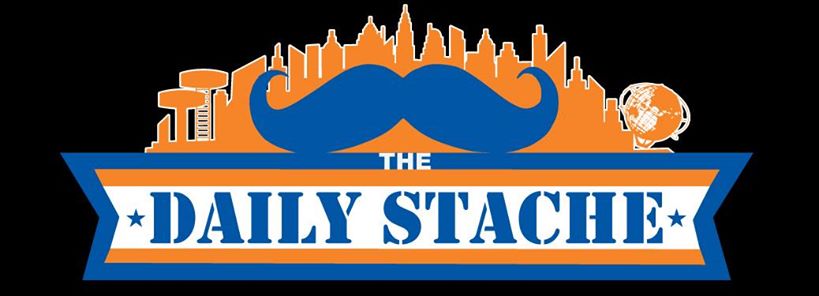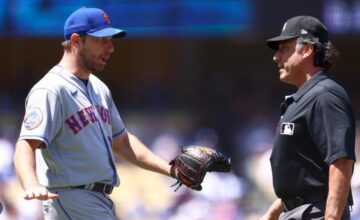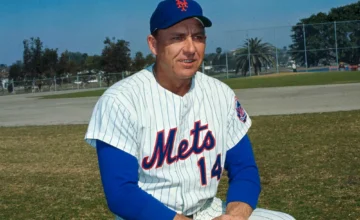
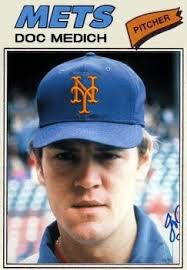
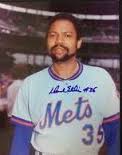
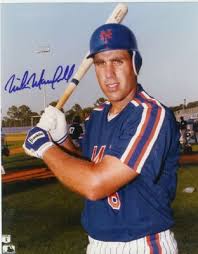
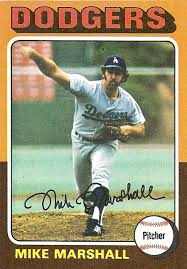 There have been many players who have had the privilege of wearing the Blue and Orange over the years. While some have been fan favorites, for others, the less said the better. But there have also been some great and very good players who had a short stint with the Mets, many for a pennant run at the end of the season. Here are five such players who may have had a brief time in Flushing and you may not have remembered wearing our favorite team’s uniform. This first in a series of articles covers a Gold Glove shortstop, a veteran starter who saved lives as a doctor, an All Star starting pitcher, a Cy Young reliever and a slugging outfielder who all wore Blue and Orange for a short period of time.
There have been many players who have had the privilege of wearing the Blue and Orange over the years. While some have been fan favorites, for others, the less said the better. But there have also been some great and very good players who had a short stint with the Mets, many for a pennant run at the end of the season. Here are five such players who may have had a brief time in Flushing and you may not have remembered wearing our favorite team’s uniform. This first in a series of articles covers a Gold Glove shortstop, a veteran starter who saved lives as a doctor, an All Star starting pitcher, a Cy Young reliever and a slugging outfielder who all wore Blue and Orange for a short period of time.
1. Larry Bowa, uniform number 2. There are few players with as acrimonious a relationship with the Mets as Larry Bowa. The two-time Gold Glover and five time All Star shortstop has been a thorn in the side of the Mets since his rookie season in 1970 and continues to be one as a coach for the Phillies. However, Larry came to the Mets during the mid season of 1985 after being released from the Cubs in mid August. The 1985 Mets had depth problems in the middle infield (Kelvin Chapman and Ron Gardenhire each were ineffective when healthy and had numerous injury problems, while Wally Backman had platoon issues against lefties). So, the Mets signed Bowa to provide depth. Larry appeared in 14 games and put together a truly forgettable slash line of 105/190/158 over 19 at bats with one double, two walks, two runs scored and two RBI’s. He played 9 games at short and 4 at second, but age and diminishing range had caught up to the Gnat, and he committed two errors. The 1985 team fell just short of the division winning Cardinals, and Bowa retired after the season.
2. Doc Medich, uniform number 22. George Medich got the nickname Doc because he was in fact a real MD (his license is currently suspended because of issues with improperly prescribing controlled substances). Doc originally came up with the Yankees and compiled a decent 124-105 record over 312 games in 11 seasons with an adequate 3.78 ERA and a 1.33 WHIP. But Doc Medich is probably most remembered for twice using his skills as a doctor to save fans who were in need of medical attention at games. His Mets career may count as one of the briefest. Doc was part of a big trade that brought Phil “Scrap Iron” Garner to the Pirates in 1977, but he was unhappy since he was studying medicine at the time at University of Pittsburgh. Doc threatened to retire but instead decided to play out his option year in 1977 and become a free agency. After a fairly lackluster 10-6 record with the A’s, Doc was sold to the Mariners by Charlie Finley since he wanted to get something for a player he was about to lose in free agency. Doc didn’t last long with the expansion team getting put on waivers on September 26, 1977, just 13 days after he’d joined the Seattle team. The last place Mets, in need of a starter late in the season, picked Doc up off waivers and gave him the start on September 29, his only appearance for the Mets. While he pitched well, giving up just 3 earned runs on 6 hits with one walk and three strike outs over 7 innings, Doc took the loss in a 5-2 game won by the Pirates, the team that had started his odyssey of a season. Doc would opt for free agency after the season and sign with the Texas Rangers.
3. Dock Ellis, uniform number 35. Dock was not an MD like Doc Ellis but a doctor of a different sort. Dock liked to “self medicate” and may be the only man in history to pitch a no hitter while tripping on LSD. Nevertheless, Dock was a really good starting pitcher, finishing fourth in the 1971 Cy Young voting. Dock also made his only All Star game that year while also helping lead the Pirates to a World Series Championship. Dock also helped the 1976 New York Yankees make the World Series. But by the time Dock came to the Mets in 1979, he was pretty much at the end of the line. He had a 1-5 record with a 5.98 ERA for the Texas Rangers by the time he was traded to the Mets for pitchers Mike Bruhert and Bob Myrick. Things didn’t get much better for the free spirited Dock, as he went 3-7 with a 6.04 ERA over 17 games (14 starts) for the last place Mets. He was sent back to his original team the Pirates on September 21 in a cash deal, too late to qualify for the post season, but he did finish his career on a World Championship team. Dock retired in 1979, and passed away on December 19, 2008.
4. Mike Marshall, uniform number 28. Veteran reliever Mike Marshall finished out his career with the New York Mets in the strike divided season of 1981. A doctor of Kinesiology (the study of biomechanics) was another free spirit like Dock Ellis. He was a rubber-armed reliever setting records in relief appearances (106) and innings pitched (208.1) for the pennant-winning Dodgers in 1974. That was also the year Marshall won the NL Cy Young Award after finishing second in voting the year before. But by the time two-time All Star came to the Mets, he’d worn out his welcome with most of the other 26 teams in baseball. Despite leading the league with 32 saves for the Twins in 1979, Marshall was released by Minnesota in 1980 and didn’t sign on with the Mets until August 19, 1981. The 38-year-old reliever actually pitched pretty well with the Mets going 3-2 with a 2.61 ERA and a 1.097 WHIP over 31 innings pitched and 20 appearances. But the game on October 2, 1981 would be Marshall’s last in the Big Leagues. Today, Marshall coaches young pitchers and has devised a way to pitch which he claims will end all the elbow injuries which cause so many young pitchers to have to undergo Tommy John surgery. Interestingly, it was Marshall who had advised Tommy John to undergo the then-radical ligament replacement surgery that would save his career and bear his name for all eternity.
5. Mike Marshall, uniform number 6. The “other” Mike Marshall to play for the Mets actually began his career with the Dodgers in 1981, the last season for pitcher Mike Marshall. Mike primarily played right field and first base, and was known for hitting with tremendous power. Over his 11-season career, Marshall hit 148 homers with 530 RBI’s. His career slash line is 270/321/446. Marshall made one All Star game but did not appear. After helping lead the Dodgers to World Series wins in 1981 and 1988, Marshall was traded to the Mets along with reliever Alejandro Pena before the 1990 season in exchange for Juan Samuel (one of the aforementioned “the less said the better” players). Marshall would not have much success with in Flushing, hitting a paltry .239 with 6 homers and 27 RBI’s in 53 games. Marshall primarily played first for the Mets (42 games) with one appearance in right field. He was traded on July 27 to the Red Sox for three prospects who never panned out. He wouldn’t do much better in the AL and would retire in 1991. Today, Marshall is the commissioner of the Pacific Association independent minor league, and hoping to get back into affiliated baseball.
